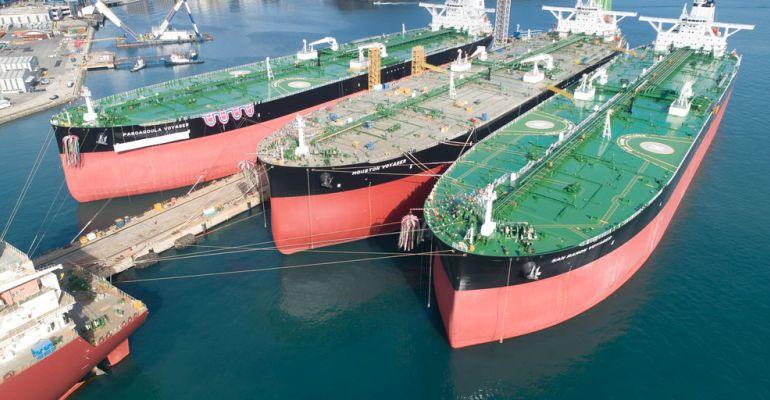Last Monday, Bahri swoop on 18 spot VLCCs in the market and added another seven later in the week, putting the week’s total at 25, according to data from Poten and Partners.
“This level of activity is unprecedented. Bahri is one of the largest VLCC owners in the world but it rarely enters the spot market to charter third party tonnage. With 41 owned VLCCs, Bahri usually does not need to,” Poten and Partners stated.
“At the moment, it is likely that the number of vessels that Bahri needs for Saudi Arabia’s exports exceeds the tonnage that they have available, hence their decisive action in the spot market,” the analyst said.
Saudi Arabia has significantly lowered its oil prices and announced their intention to increase production and exports, leading to a collapse in global oil prices with WTI declining from $45.90 per barrel on 5 March to present level of around $31 per barrel.
“The events also ignited interest in floating storage and tanker markets started to percolate,” Poten and Partners wrote. “Within a little more than a week, VLCC rates on the benchmark AG-Far East route went from $30,000 a day to $210,000 a day, a 600% increase.”
Shipbroker Gibson said in its latest weekly report that “over the week time charter equivalents have rocketed from around $30,000 per day to $250,000 per day with the period upon rates as high as WS 215 for long east runs and WS 400 paid for short move to west coast India.”
In addition to the sheer number of fixtures, the intended destination of the vessels saw none headed to eastern destinations, a clear sign that the Saudis are targeting western clients.
Ten of the 25 VLCCs are destined for the US Gulf, while four are going ‘west’ – most likely Europe. Another 10 VLCCs are fixed to discharge at Ain Sukhna, the entry point of the Sumed pipeline which transports crude oil through Egypt from the Red Sea to the Mediterranean, according to data from Poten and Partners.
In total, last week saw 92 fixtures, up from 56 fixtures in the previous week. The average number of VLCC fixtures per week for 2020 year-to-date is about 50, which is similar to the weekly averages in recent years.
“It is unlikely that this high level of fixing will be maintained in the coming weeks, because global oil demand remains still quite dire,” Poten and Partners said.
Gibson observed that signs of China’s economic activity is re-emerging, which may come at a time when western countries enter a lock-down and short-term falling demand amid the coronavirus outbreak. But all these could change if Saudi Arabia and Russia come to a compromise over production levels and various governmental measures prove successful against the coronavirus.
Copyright © 2024. All rights reserved. Seatrade, a trading name of Informa Markets (UK) Limited.
Add Seatrade Maritime News to your Google News feed.  |



